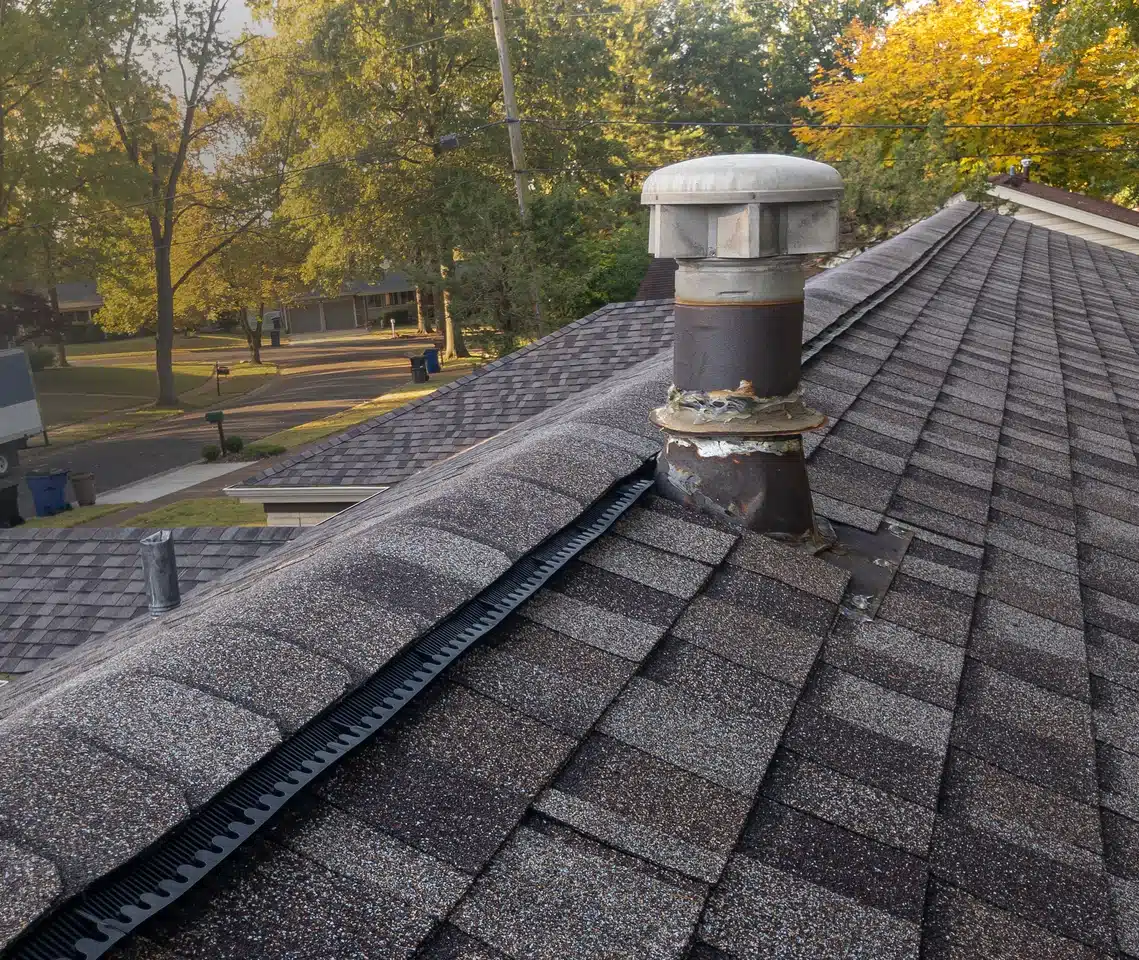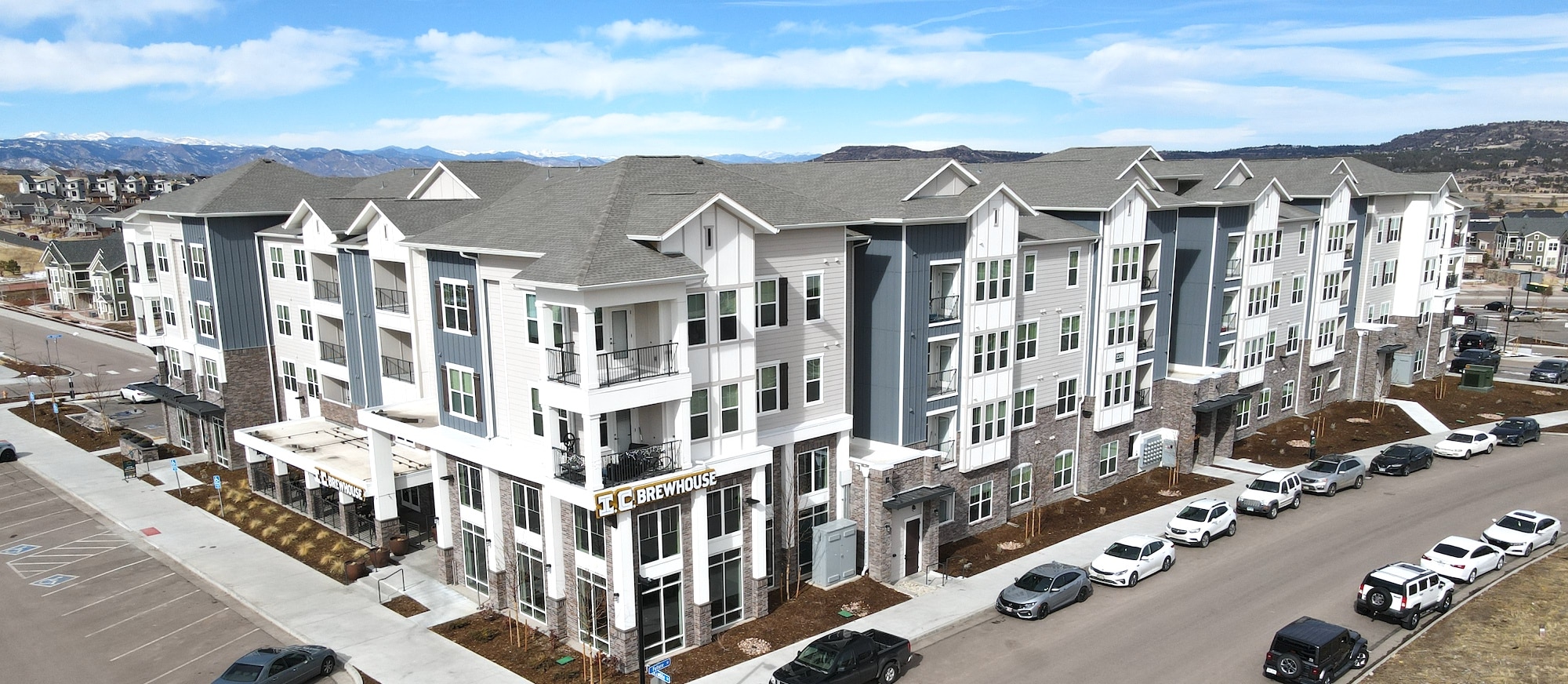One thing commercial property owners tend to overlook is roof ventilation. When you own a building or commercial space with a flat roof, having adequate ventilation is essential when it comes to avoiding structural damage caused by moisture buildup. It’s also essential to the longevity of your roof and to avoid needing excessive commercial roof repair work.
But just how much ventilation does your property’s flat roof actually need? And what are your flat roof ventilation options?
In this article, we’ll cover everything you need to know about flat roof ventilation as a property owner. Keep reading to learn more.
Table of Contents

Why Flat Roof Ventilation Is So Important
Flat roofing systems — just like all other types of roofing systems — require an adequate amount of ventilation to prevent moisture buildup. Moisture buildup is the primary issue in flat roofing systems as it can lead to a variety of issues, including:
- Material deterioration
- Mold, mildew, algae, and lichen growth
- Roof deck rot
- Structural damage
Below is a more detailed breakdown of the issues that can occur with flat roof systems and their related systems:
Moisture and Condensation
Once again, flat roofs are especially susceptible to moisture buildup and condensation. If you don’t have the proper flat roof ventilation on your commercial property, moisture will start to accumulate across your roofing system and within the attic or access space. This will lead to the issues mentioned above.
Moisture buildup will also cause the insulation to become ineffective, which can lead to mold growth beneath your roofing materials as well as on top. If condensation forms along the underside of your roof deck, it will lead to rot, water damage, and structural damage.
Heat and Humidity
Flat roofs also tend to absorb more heat from the sun compared to their high-sloped counterparts. This can lead to higher access space or attic temperatures, which also causes indoor humidity levels to rise. The more humidity you have under your flat roof, the more exacerbated any moisture issues you have will become.
Having proper ventilation will allow heat to escape, mitigating any humidity buildup to maintain healthy temperatures beneath your roof.
Air Circulation

Having the right type of ventilation will also help promote better air circulation, which can keep your interior spaces closest to the roof cool and dry. This is another way to prevent moisture buildup and mold growth while also ensuring healthy air is passing through your buildings (versus stale air).
In addition to keeping moisture and heating issues at bay, good air circulation can help prevent insect infestation, keeping your interior and roofing system free of pest damage.
Air Intake and Exhaust
An integral part of your flat roof ventilation system is its air intake and exhaust vents. The air intake vent allows fresh air to enter into the attic or access space, while the exhaust vent allows it to exit freely.
If your intake and exhaust vents aren’t installed properly or aren’t functioning properly, then you won’t have good air circulation.
Air Conditioning
Your HVAC system doesn’t just cool or heat your buildings or retail spaces. It also promotes air circulation and reduces heat buildup. When your flat roof is adequately ventilated, it will reduce the load on your HVAC system, so it doesn’t have to work as hard
However, without good ventilation, your HVAC system will have to work even harder to maintain comfortable indoor temperatures. This will not only reduce its energy efficiency and the life of your HVAC system, but it’ll cause your energy bill to spike.
Snow
Lastly, proper flat roof ventilation is crucial during winter months if you live in an area where snow or ice tends to accumulate on your roof. Aside from the weight, not having proper ventilation can lead to the snow melting and refreezing, which causes ice dams and later water damage.
Good ventilation will reduce the potential for snow buildup and reduce the risk of ice dam formation.
What Are Your Flat Roof Ventilation Options?

When it comes to choosing the right type of flat roof ventilation for your commercial property or properties, you’ll find that manufacturers typically make recommendations for the minimum amount of ventilation needed. Their recommendations are typically based on factors such as the size and type of roofing system, materials used, and the climate in your area.
Of course, this may present you with several options to choose from. The key is making the right decision based on your property’s specific needs. Below are the most common types of flat roof ventilation options, along with their advantages and disadvantages:
Passive Roof Vents
Passive roof vents are arguably the most common type of flat roof ventilation. They work by allowing the air to flow through the roofing system, which regulates the temperature and humidity levels within your property’s attic or access space.
These vents are usually installed near the roof’s peak (or highest point applicable) to allow hot air to escape while drawing fresh air in from the outdoors.
Passive roof vents are low maintenance and rely on natural forces to work. However, if you don’t have enough room on your flat roof, you won’t be able to install these vents.
Roofing Membrane Vents
Roofing membranes are another popular venting option for flat roofing systems. They’re installed directly into the roofing membrane and are designed to let hot air escape while preventing any moisture from seeping into your attic or access space.
Roofing membrane vents are usually made from very durable materials, including PVC and TPO. This contributes to their longevity and effectiveness, as they’re known for minimizing ice damming, among other things. However, they can be difficult and expensive to install.
Aluminum Roof Vents
Aluminum roof vents are durable and long-lasting as they’re made from high-quality aluminum and are designed to withstand some of the harshest weather conditions. They’re also lightweight and easy to install, and they’re known for being rust-free.
Metal Roof Vents
Metal roof vents typically refer to galvanized steel or copper. They’re designed to last longer than your average flat roof vent and can stand up to horrible weather conditions — which is great if you live in an area with extreme weather.
The one downside to metal roof vents (and aluminum vents) is that when improperly coated, they can trap rising water vapor. As the roof cools throughout the night, the trapped moisture can become liquid and eventually cause damage.
Want to Learn More About Your Flat Roof Ventilation Options?

Flat roof ventilation isn’t something you want to overlook — or rush — when it comes to protecting your commercial property. If you aren’t sure where to go from here, it’s best to consult with the roofing experts.
Here at Tectum Roofing, we can help you decide the best ventilation system and roofing materials for your commercial properties. Get in touch with us today to schedule a free inspection and get an accurate estimate for your flat roofing needs.



